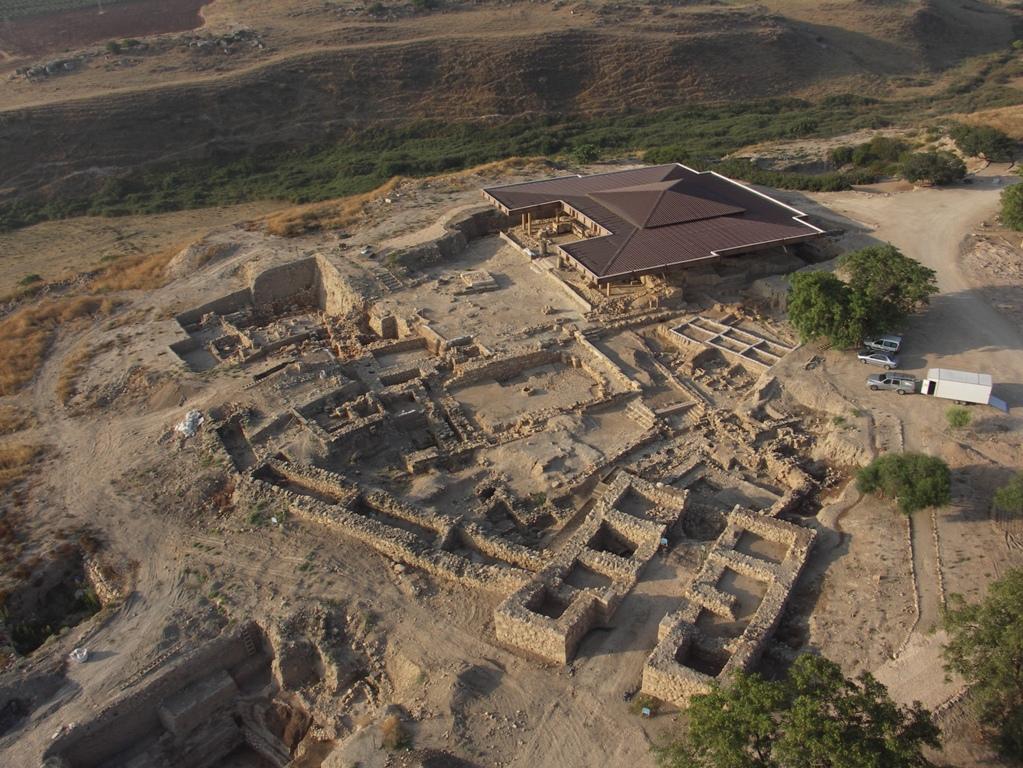A group of archaeologists led by Prof. Amnon Ben-Tor and Dr. Sharon Zuckerman from the Institute of Archeology at the Hebrew University uncovered at the excavation site at Tel Hazor a document from the 18th-17th century BC on which are written laws in the style of the Hammurabi laws related to the relationship between a person and his fellow man

"The document we uncovered includes laws that concern body parts and damages," says Prof. Ben-Tor. "These laws are similar to the laws on the same matter contained in the Codex Hammurabi, as well as to the laws related to bodily harm of the 'tooth for tooth' type mentioned in the Book of Exodus."
"This is the first time a certificate written in Hammurabi legal style has been found in Israel," notes Dr. Sharon Zuckerman. Hammurabi, king of Babylon, who lived in the 18th century BC, enacted and established a codex of laws which is the most extensive among the laws of the ancient East. It is known that the laws served as inspiration for the biblical laws concerning the relationship between man and his fellow man.
The Tin certificate, which was found in two parts, is written in cuneiform in the Akkadian language, a language that was accepted at the time for diplomatic correspondence, and contains about 20 words. The words, deciphered so far by Prof. Wayne Horowitz, an Assyrian expert from the Institute of Archeology at the Hebrew University, are "master" and "slave", and a word related to body parts, probably "tooth". According to the researchers, the text is written in the language and style of Hammurabi's laws.
During the Middle Bronze Age Hazor was in contact with neighboring cities and kingdoms in the ancient East in Syria and Mesopotamia, among them kingdoms such as Babylon and Mari. "The certificate found confirms what we know about Hazor from Mesopotamia and Syria," says Prof. Horowitz. "It is known that in Hazor lived writers who came out of the tradition of the writers of their time, a tradition that was accepted in Babylon and Syria."
The discovered certificate is part of a series of certificates from the Middle Bronze Age, between the 16th century
to 18 BC, which were discovered at the Tel Hazor excavation site. Along with the contemporary discovery, 19 cuneiform documents were uncovered in excavations at Tel Hazor - the largest number of documents uncovered in excavations in Israel at one site. The first documents were already discovered during excavations conducted at the site in the 50s and 60s by a delegation led by the late archaeologist Prof. Yigal Yedin. The additional certificates were discovered by a delegation of the Saltz Fund in memory of Yigal Yedin led by Prof. Ben-Tor and Dr. Zuckerman in excavations at Tel Hazor. Most of the certificates were discovered in the palace area, however the current certificate was discovered in the area near the palace in a random scan.
In the additional documents found in the excavations in Hazor over the years, you can also find a bilingual dictionary, legal and financial documents, texts related to divination, a text used to teach arithmetic, the multiplication table, and more. "The large variety of certificates indicates that Hazor was at the time an important center of administration and learning, as well as the fact that a first-rate school of writers operated there," says Prof. Ben-Tor.
The archaeologists estimate that they are about to uncover a monumental structure from the Canaanite period where additional written documents may be found. Moreover, the archaeologists excavating in Hazor estimate that two archives existed there, from the 18th-17th century and the 14th-13th century that have not yet been found. The excavations in Hazor are being conducted on behalf of the Institute of Archeology of the Hebrew University and the Society for the Exploration of the Land of Israel and its Antiquities.

3 תגובות
According to Philo, the limit of morality is given by the gods - justice and fairness. On the other hand, the Torah attributes the laws to God and thus disconnects morality from the polytheistic connection.
This is probably the archive of Yavin the king of Hazor mentioned in the book of Joshua
What is? God was inspired by Morbi?